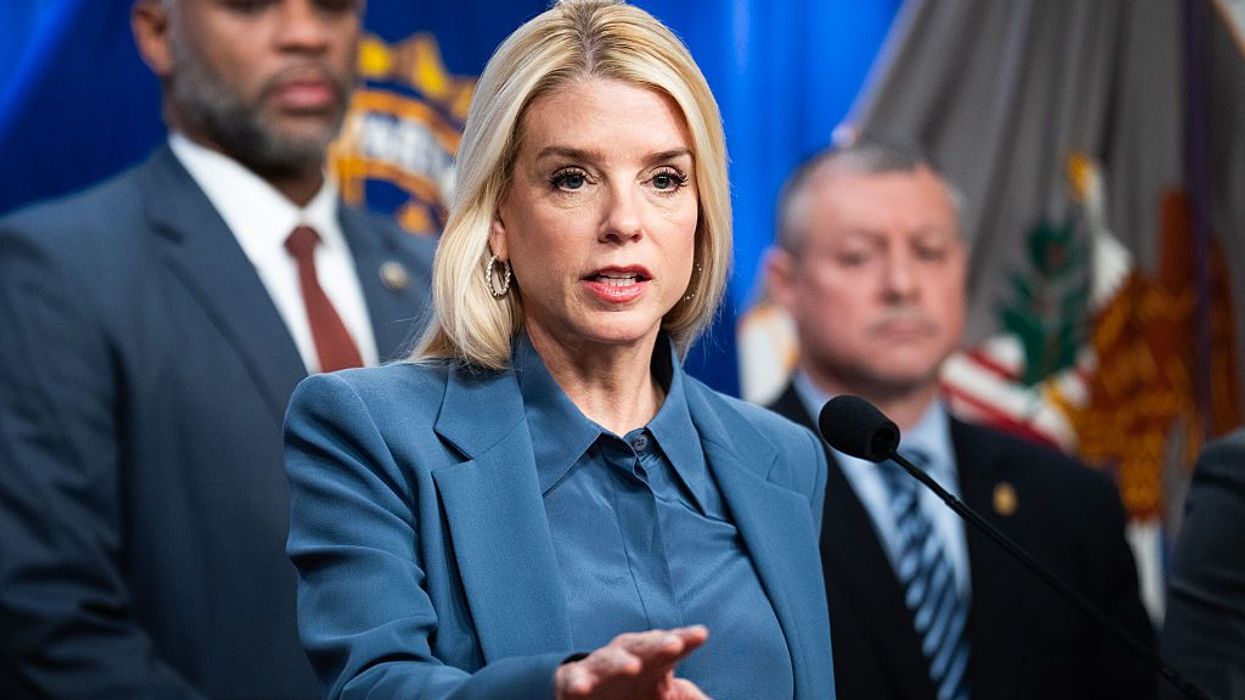November, 04 2019, 11:00pm EDT

'Forever Chemicals' in Over 500 N.J. Water Systems and Sources-More Than 1,000 Contamination Sites Nationwide
WASHINGTON
The toxic fluorinated chemicals known as PFAS have been detected in more than 500 New Jersey drinking water systems and groundwater sources, according to the latest state and federal data compiled and mapped by EWG.
The 470 new detections reported as of August by the New Jersey Department of Environmental Protection, or DEP, brings the total number of PFAS-contaminated water systems and sources in the state to 517 - more than 11 times as many as the 47 locations in EWG's previous count.
The new detections include PFAS in both treated tap water and untreated groundwater, mostly from DEP-mandated tests this year. Details of the new detections - locations, people served by the water systems, sources sampled and PFAS compounds detected - are here.
The total of 517 New Jersey locations includes 221 community water systems serving more than 3.6 million people, and 296 systems serving single sites without permanent residents. Besides the DEP's recent tests, the total includes PFAS detections reported under the U.S. Environmental Protection Agency's Third Unregulated Contaminant Monitoring Rule and in its Safe Drinking Water Information System, in Department of Defense reports, in DOD data obtained by EWG under the Freedom of Information Act, and additional sites tracked by the Social Science Environmental Health Research Institute at Northeastern University.
Nationwide, PFAS contamination has now been reported in 1,361 locations in 49 states, including community water systems, groundwater sources, military bases, airports and industrial sites. All contamination locations are plotted on EWG's newly updated interactive PFAS map. EWG's analysis of unreleased EPA data estimates that more than 100 million Americans may have PFAS in their drinking water.
Very low doses of PFAS chemicals in drinking water have been linked to an increased risk of cancer, reproductive and immune system harm, liver and thyroid disease, and other health problems.
All but five of the total detections in New Jersey water exceeded 1 part per trillion, or ppt, the safe level recommended by the best independent studies and endorsed by EWG. More than 65 of the detections exceeded the legal limits for three PFAS chemicals proposed or adopted by the state.
In the absence of a federal drinking water standard, in April the New Jersey DEP proposed drinking water limits of 13 ppt for PFOA and 14 ppt for PFOS, the two most notorious and well-studied fluorinated compounds. Those proposals are pending public review and comment. In the meantime, the DEP has set an interim standard of 10 ppt for either chemical alone or in combination. The state earlier adopted a legal limit of 13 ppt for PFNA, one of four other PFAS compounds detected besides PFOA and PFOS.
The highest detection in New Jersey was 264,000 ppt of combined PFOA and PFOS in a groundwater monitoring well at Joint Base McGuire-Dix-Lakehurst, in Burlington County. Several other detections - in community water systems serving Camden, Paulsboro, South Orange, Mahwah, Waldwick, Raritan and Atlantic City - were above 70 ppt, the inadequate lifetime health advisory level set by the EPA for PFOA and PFOS.
Over a hundred of the New Jersey water systems with new detections serve schools and daycare centers with their own water supplies not connected to the local community water system, with many exceeding the state's proposed or adopted legal limits for PFOA, PFOS or PFNA. Other new detection sites include hospitals, mobile home parks, churches and shopping centers with their own systems.
More detections are likely coming soon. The DEP will require systems using surface water and all larger systems serving more than 10,000 people to test for PFAS in the first quarter of next year.
EWG's nationwide PFAS map shows not the current level of contamination in tap water but rather the extent of contaminated locations identified since 2013. Maximum detection levels shown on the map are a snapshot of the water source when it was tested, not necessarily what is coming out of taps now. Water systems may have taken contaminated wells offline, blended water from contaminated wells with cleaner sources, or installed water treatment to reduce PFAS levels.
PFAS are "forever chemicals" that never break down once released into the environment, and they build up in our blood and organs. According to the federal Centers for Disease Control and Prevention, virtually all Americans have PFAS in their blood.
Major sources of contamination are PFAS-based firefighting foams, industrial discharges into air and water, and PFAS in food packaging and other consumer products. Once released to the environment, PFAS enter our bodies through food, drinking water and other routes.
Military and civilian firefighters continue to use PFAS firefighting foams that seep into drinking water supplies, contaminating hundreds of military installations. In May, New Jersey's attorney general filed a lawsuit against 3M, DuPont and other companies for making and selling PFAS-based firefighting foams.
Manufacturers also continue to discharge PFAS into the air and water. Nearly 500 facilities nationwide are suspected of releases of PFAS chemicals, including at least eight suspected facilities in New Jersey.
PFAS manufacturers are not required to clean up past contamination, even though companies like 3M and DuPont knowingly released PFAS chemicals for decades. Internal company documents show that the companies knew the risks PFAS posed to their workers and neighboring communities but didn't tell regulators.
Congress may soon adopt PFAS reforms included in the House and Senate versions of a must-pass defense spending bill, the National Defense Authorization Act. Provisions in the bill would quickly end military uses of PFAS in firefighting foam and food packaging, reduce industrial discharges into drinking water supplies, remediate sites with the worst contamination, set a national drinking water standard and expand PFAS monitoring and reporting.
The Environmental Working Group is a community 30 million strong, working to protect our environmental health by changing industry standards.
(202) 667-6982LATEST NEWS
Billionaire Palantir Co-Founder Pushes Return of Public Hangings as Part of 'Masculine Leadership' Initiative
"Immaturity masquerading as strength is the defining personal characteristic of our age," said one critic in response.
Dec 07, 2025
Venture capitalist Joe Lonsdale, a co-founder of data platform company Palantir, is calling for the return of public hangings as part of a broader push to restore what he describes as "masculine leadership" to the US.
In a statement posted on X Friday, Lonsdale said that he supported changing the so-called "three strikes" anti-crime law to ensure that anyone who is convicted of three violent crimes gets publicly executed, rather than simply sent to prison for life.
"If I’m in charge later, we won’t just have a three strikes law," he wrote. "We will quickly try and hang men after three violent crimes. And yes, we will do it in public to deter others."
Lonsdale then added that "our society needs balance," and said that "it's time to bring back masculine leadership to protect our most vulnerable."
Lonsdale's views on public hangings being necessary to restore "masculine leadership" drew swift criticism.
Gil Durán, a journalist who documents the increasingly authoritarian politics of Silicon Valley in his newsletter "The Nerd Reich," argued in a Saturday post that Lonsdale's call for public hangings showed that US tech elites are "entering a more dangerous and desperate phase of radicalization."
"For months, Peter Thiel guru Curtis Yarvin has been squawking about the need for more severe measures to cement Trump's authoritarian rule," Durán explained. "Peter Thiel is ranting about the Antichrist in a global tour. And now Lonsdale—a Thiel protégé—is fantasizing about a future in which he will have the power to unleash state violence at mass scale."
Taulby Edmondson, an adjunct professor of history, religion, and culture at Virginia Tech, wrote in a post on Bluesky that the rhetoric Lonsdale uses to justify the return of public hangings has even darker intonations than calls for state-backed violence.
"A point of nuance here: 'masculine leadership to protect our most vulnerable' is how lynch mobs are described, not state-sanctioned executions," he observed.
Theoretical physicist Sean Carroll argued that Lonsdale's remarks were symbolic of a kind of performative masculinity that has infected US culture.
"Immaturity masquerading as strength is the defining personal characteristic of our age," he wrote.
Tech entrepreneur Anil Dash warned Lonsdale that his call for public hangings could have unintended consequences for members of the Silicon Valley elite.
"Well, Joe, Mark Zuckerberg has sole control over Facebook, which directly enabled the Rohingya genocide," he wrote. "So let’s have the conversation."
And Columbia Journalism School professor Bill Grueskin noted that Lonsdale has been a major backer of the University of Austin, an unaccredited liberal arts college that has been pitched as an alternative to left-wing university education with the goal of preparing "thoughtful and ethical innovators, builders, leaders, public servants and citizens through open inquiry and civil discourse."
Keep ReadingShow Less
Hegseth Defends Boat Bombings as New Details Further Undermine Administration's Justifications
The boat targeted in the infamous September 2 "double-tap" strike was not even headed for the US, Adm. Frank Bradley revealed to lawmakers.
Dec 07, 2025
US Defense Secretary Pete Hegseth on Saturday defended the Trump administration's policy of bombing suspected drug-trafficking vessels even as new details further undermined the administration's stated justifications for the policy.
According to the Guardian, Hegseth told a gathering at the Ronald Reagan presidential library that the boat bombings, which so far have killed at least 87 people, are necessary to protect Americans from illegal drugs being shipped to the US.
"If you’re working for a designated terrorist organization and you bring drugs to this country in a boat, we will find you and we will sink you," Hegseth said. "Let there be no doubt about it."
However, leaked details about a classified briefing delivered to lawmakers last week by Adm. Frank Bradley about a September 2 boat strike cast new doubts on Hegseth's justifications.
CNN reported on Friday that Bradley told lawmakers that the boat taken out by the September 2 attack was not even headed toward the US, but was going "to link up with another, larger vessel that was bound for Suriname," a small nation in the northeast of South America.
While Bradley acknowledged that the boat was not heading toward the US, he told lawmakers that the strike on it was justified because the drugs it was carrying could have theoretically wound up in the US at some point.
Additionally, NBC News reported on Saturday that Bradley told lawmakers that Hegseth had ordered all 11 men who were on the boat targeted by the September 2 strike to be killed because "they were on an internal list of narco-terrorists who US intelligence and military officials determined could be lethally targeted."
This is relevant because the US military launched a second strike during the September 2 operation to kill two men who had survived the initial strike on their vessel, which many legal experts consider to be either a war crime or an act of murder under domestic law.
Rep. Jim Himes (D-Conn.), the ranking member of the House Permanent Select Committee on Intelligence, watched video of the September 2 double-tap attack last week, and he described the footage as “one of the most troubling things I’ve seen in my time in public service.”
“Any American who sees the video that I saw will see its military attacking shipwrecked sailors,” Himes explained. “Now, there’s a whole set of contextual items that the admiral explained. Yes, they were carrying drugs. They were not in position to continue their mission in any way... People will someday see this video and they will see that that video shows, if you don’t have the broader context, an attack on shipwrecked sailors.”
While there has been much discussion about the legality of the September 2 double-tap strike in recent days, some critics have warned that fixating on this particular aspect of the administration's policy risks taking the focus off the illegality of the boat-bombing campaign as a whole.
Daphne Eviatar, director for security and human rights for Amnesty International USA, said on Friday that the entire boat-bombing campaign has been "illegal under both domestic and international law."
"All of them constitute murder because none of the victims, whether or not they were smuggling illegal narcotics, posed an imminent threat to life," she said. "Congress must take action now to stop the US military from murdering more people in the Caribbean and Eastern Pacific."
Keep ReadingShow Less
Leaked Memo Shows Pam Bondi Wants List of 'Domestic Terrorism' Groups Who Express 'Anti-American Sentiment'
"Millions of Americans like you and I could be the target," warned journalist Ken Klippenstein of the new memo.
Dec 07, 2025
A leaked memo written by US Attorney General Pam Bondi directs the Department of Justice to compile a list of potential "domestic terrorism" organizations that espouse "extreme viewpoints on immigration, radical gender ideology, and anti-American sentiment."
The memo, which was obtained by journalist Ken Klippenstein, expands upon National Security Presidential Memorandum-7 (NSPM-7), a directive signed by President Donald Trump in late September that demanded a "national strategy to investigate and disrupt networks, entities, and organizations that foment political violence so that law enforcement can intervene in criminal conspiracies before they result in violent political acts."
The new Bondi memo instructs law enforcement agencies to refer "suspected" domestic terrorism cases to the Joint Terrorism Task Forces (JTTFs), which will then undertake an "exhaustive investigation contemplated by NSPM-7" that will incorporate "a focused strategy to root out all culpable participants—including organizers and funders—in all domestic terrorism activities."
The memo identifies the "domestic terrorism threat" as organizations that use "violence or the threat of violence" to advance political goals such as "opposition to law and immigration enforcement; extreme views in favor of mass migration and open borders; adherence to radical gender ideology, anti-Americanism, anti-capitalism, or anti-Christianity; support for the overthrow of the United States Government; hostility towards traditional views on family, religion, and morality."
Commenting on the significance of the memo, Klippenstein criticized mainstream media organizations for largely ignoring the implications of NSPM-7, which was drafted and signed in the wake of the murder of right-wing activist Charlie Kirk.
"For months, major media outlets have largely blown off the story of NSPM-7, thinking it was all just Trump bluster and too crazy to be serious," he wrote. "But a memo like this one shows you that the administration is absolutely taking this seriously—even if the media are not—and is actively working to operationalize NSPM-7."
Klippenstein also warned that NSPM-7 appeared to be the start of a new "war on terrorism," but "only this time, millions of Americans like you and I could be the target."
Keep ReadingShow Less
Most Popular


